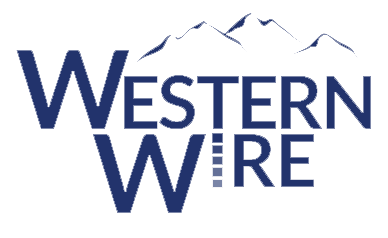
Colorado Gov. John Hickenlooper (D) welcomed proposed revisions to the Department of Interior’s reorganization plan and said the possible relocation of the Bureau of Land Management’s headquarters to the West would be a “different approach” to federal action in comments on Thursday.
Hickenlooper spoke with reporters at the Climate Leadership Conference in Denver.
Hickenlooper indicated that after conversations with Interior Secretary Ryan Zinke last week that addressed BLM reorganization and possibly relocation of the agency’s headquarters to the West, the conversation is still ongoing.
“I’ve heard both sides. A lot of people are saying BLM personnel and Interior personnel are already in the field all the time, and that’s true,” Hickenlooper said, addressing one of the most common arguments in opposition to BLM’s potential relocation.
The BLM manages nearly 245 million acres of federal land throughout the country, with most located in the Rocky Mountain West. As part of its managerial oversight, it is responsible for permitting natural resource production, including oil and gas, on nearly 700 million subsurface acres.
Last August, Hickenlooper told Western Wire that Colorado was already home to many federal employees, and that “[t]heir colleagues would receive a warm welcome” if Zinke relocated BLM’s headquarters to the state. He called the state an “ideal location” and “having them closer to the resources they manage makes good sense.”
The relocation would involve about 350 federal employees, according to the Denver Post.
As part of the Interior Department’s reorganization, Hickenlooper said that such a move would represent a significant departure from current federal practices.
“Having a whole agency out here would be a different approach. It would have some meaning,” Hickenlooper said. He also acknowledged the competitive nature of states jockeying for additional jobs and the attention that agency operations would bring, cautioning that the decision should be made based on agency needs.
“Obviously every state is always competing to get federal jobs but I think the question to be asking here is what’s best for the BLM, what’s best for the country—what makes the most sense? How can they be most effective and that’s hopefully the way they’re addressing it and that’s the way most of the western governors [feel],” Hickenlooper said.
“If it comes to your state you’re delighted but wherever it goes [in the West] you want to believe it’s adding to the resilience and effectiveness of the agency,” he continued.
A bill by Sen. Cory Gardner (R-Colo.) and Rep. Scott Tipton (R-Colo.) last year called for the BLM to relocate to one of 12 Western states: Alaska, Arizona, California, Colorado, Idaho, Montana, Nevada, New Mexico, Oregon, Utah, Washington, and Wyoming.
In addition to Hickenlooper, support for the relocation is bipartisan.
Colorado Democratic Representatives Ed Perlmutter and Jared Polis have endorsed the legislation, with Perlmutter calling the move West “a natural fit,” with Colorado “well-positioned” to house the agency. Polis said moving the BLM to Colorado brings the agency closer to the public lands it manages, “and that is a good thing.”
In January, a spokeswoman for U.S. Senator Michael Bennet (D-Colo.) told the Washington Post that he was “supportive” of a move, “particularly to the West.”
Should Colorado be chosen by Zinke, at least two cities have emerged as possible destinations.
Gardner and Tipton have suggested Grand Junction for the BLM’s headquarters, while notes from a meeting with Zinke about reorganization last summer pointed to Denver as the main office not only for the BLM, but also the Fish and Wildlife Service and the Bureau of Reclamation.
Hickenlooper said he and his staff met with Zinke three times last week to discuss the reorganization of the Interior Department.
“As Western governors, we had given feedback to the original maps around the reorganization plan and are trying to look at ways we can make it more effective,” Hickenlooper said.
“The new maps were much better than the old maps from our perspective. I’m not sure they’re perfect yet,” Hickenlooper said.
According to the original maps, states like Colorado had been divided between three separate regions using watersheds as boundaries. The new map, revealed in February, uses state boundaries instead and combines Colorado, New Mexico, Utah, and Wyoming into the “Upper Colorado Basin.”
The Interior Department will still be divided into 13 regions, the same as in the original plan. The Western Governors’ Association had expressed deep concerns about DOI’s watershed-based proposal.
“Getting back to where states were not being divided” was important, Hickenlooper said. “I thought the original maps had the potential to weaken a governor’s authority.”

